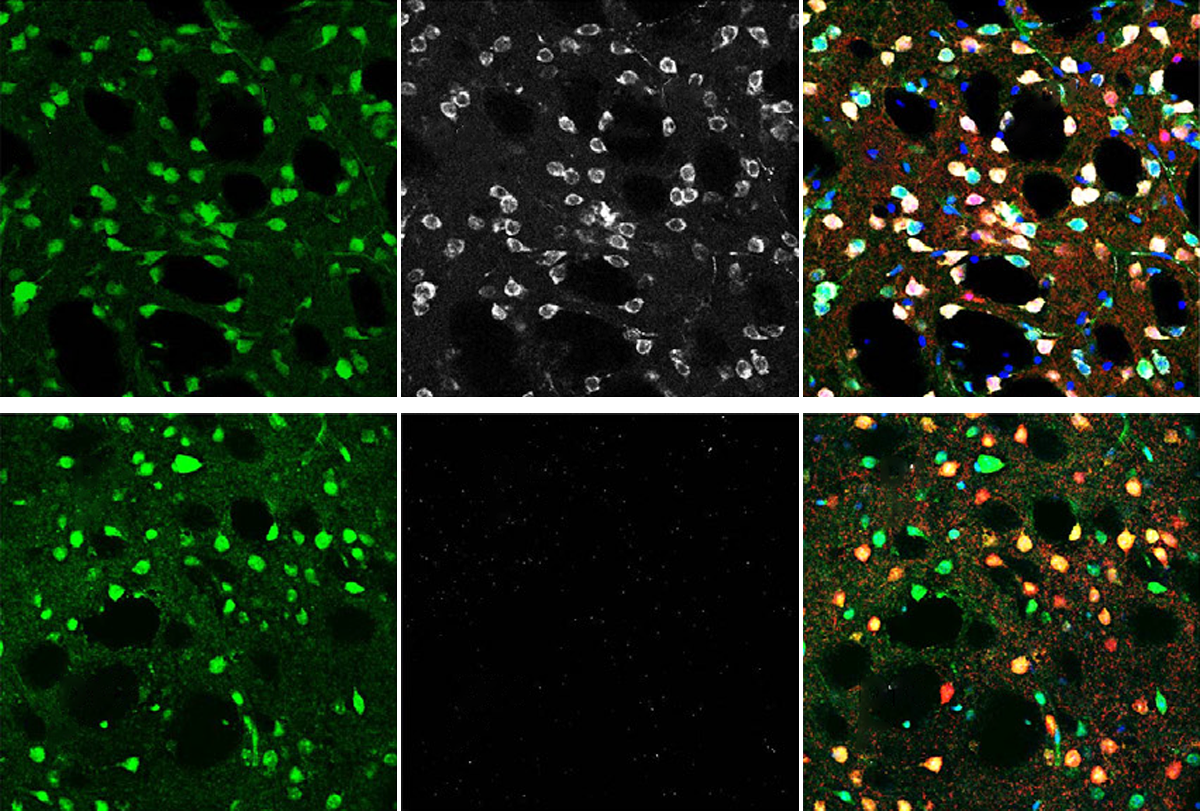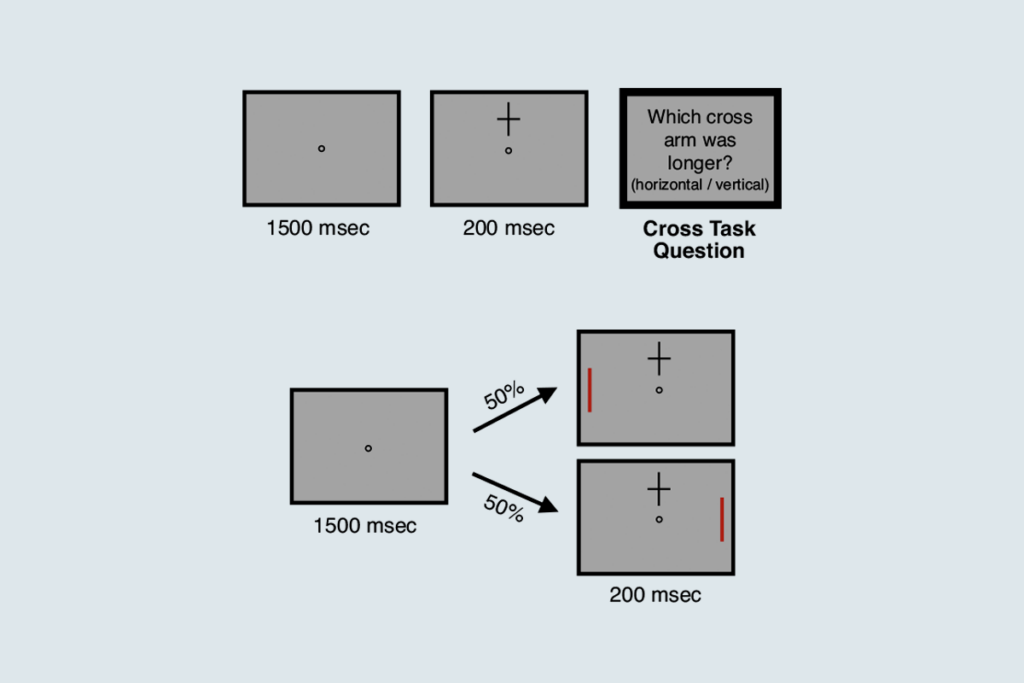Overactive protein synthesis in the striatum — a cluster of cells in the middle of the brain — contributes to repetitive behaviors in a mouse model of fragile X syndrome, a new study suggests.
The findings add to mounting evidence that restricted interests and repetitive behaviors originate in the striatum. Swelling of this region correlates with repetitive behaviors in autistic children. And mice with mutations in the autism-linked gene SHANK3, which is highly expressed in the striatum, groom themselves obsessively.
The striatum receives signals from other brain regions, including the cortex and thalamus, and integrates the information to initiate movement. Its function relies on two populations of spiny projection neurons: Some express the dopamine D1 receptor (DRD1) and promote action, whereas others express the D2 receptor (DRD2) and inhibit movement.
In the new study, researchers found that mice missing the gene FMR1 — which is mutated in people with fragile X syndrome — spend more time self-grooming and bury more marbles than do their wildtype littermates. Striatal neurons expressing DRD1, but not DRD2, show elevated protein synthesis and altered synaptic plasticity, the team found.
A closer look revealed more dendritic spines on DRD1 neurons in mice lacking FMR1 than in wildtype mice. And deletion of FMR1 from just DRD1-expressing cells produced a set of behaviors similar to those seen in the complete knockout, the study found.
The findings hint that the loss of FMR1, and its protein product FMRP, increases connectivity to cell populations that initiate movement, says lead investigator Eric Klann, director of the Center for Neural Science at New York University in New York City.
I
n neurons expressing DRD1, 43 proteins showed altered expression in mice missing FMR1 compared with wildtype rodents. One of the proteins, RGS4, is an enzyme that mediates synaptic plasticity. The enzyme interacts with a protein called muscarinic 4 receptor, which researchers have previously implicated in fragile X: Stimulating the receptor corrects protein synthesis and synaptic plasticity in the hippocampus of model mice.Similarly, treating FMR1 knockout mice with a compound that activates muscarinic receptor 4 restored synaptic plasticity in the striatum, the new study found. What’s more, the treatment rescued repetitive behaviors, pointing to RGS4 as a potential treatment avenue.
The findings appeared online 27 July in Cell Reports.
The team next aims to pinpoint how altered plasticity in DRD1-expressing neurons triggers repetitive behaviors, Klann says. One approach is to delete FMR1 specifically in cortical neurons that signal to DRD1 cells — but not those expressing DRD2. Reversing behavior by restoring FMR1 in DRD1-expressing neurons would be compelling evidence that changes in these cells drive the phenotype, Klann says.





